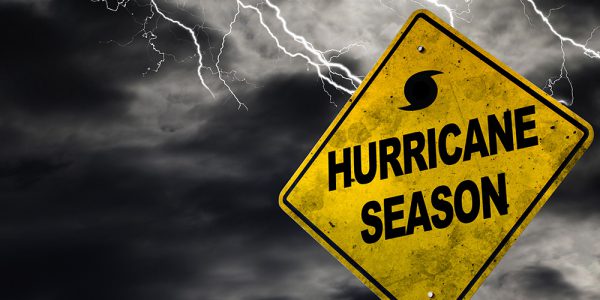Along the Gulf South, we are nearly three months into Hurricane Season, and approaching the more active time of the year. Unfortunately, it’s not a matter of “if,” but “when” a disaster will strike—so it’s critical that businesses prepare for emergencies before they occur. Every company should have a process in place to make sure that you, your employees, and clients are prepared in case of an emergency. However, research shows that more than 57% of real estate companies lack business continuity and an effective disaster plan. We tapped our Stirling Properties’ expert, Patrick Malik, Vice President of Property & Risk Management for his guidance on Hurricane Preparation and Emergency Planning. Below are a few tips for advance emergency planning concepts.

Part I: Advance Emergency Planning
Businesses in hurricane prone environments have the opportunity to “get ready” each year. This is a tremendous responsibility considering the advancement of technology, evolving business functions, and the need for planners to anticipate hurricane impact scenarios and its effect on their business.
Before starting the emergency planning process, serious thought should be applied to the following concepts as advance preparation:
- Income Stream
- Chief Job Functions
- Coordination with IT to plan data and connectivity preservation
- Insurance
- Critical Company Responsibilities
Your income stream, how it is derived and how it is processed, is essential to preparing cash reserves and insuring against the loss of revenue. Real estate service companies have difficulty insuring their transactional income but can rely on recurring monthly property management income to help bridge times when transactional income pauses due to a disaster.
The principal job functions necessary for assuring your income stream, getting employees back to work safely, and establishing your business continuity need to be identified ahead of time. Also, attention to supporting your employees with their personal emergency plans and specific needs after a hurricane is instrumental to your company’s recovery. Likewise, getting individuals back to work with temporary offices, if necessary, is important to consider in establishing job function and returning to normality.
Continuing advances in IT infrastructure and your company’s dependence on its availability are ever increasing. Bandwidth has become irreplaceable, and security defense of your network sometimes limits your outside access. Data storage, redundancy, and consistent access to email are critical matters to preserve job performance. The technology and IT infrastructure that supports these vital job functions must be resilient and available for employees to resume work.

Insurance is not a popular subject, but it is necessary when unfortunate and traumatic events occur. Many people are ill-equipped or simply don’t want to deal with these situations. Understanding your insurance and knowing that your coverage is adequate to assure your business continuity is very important. Small- and mid-size companies can seldom afford a risk manager on staff and depend greatly on their insurance agent for advice and guidance. The resulting coverage is based on how well your insurance agent knows your company—its income stream, critical job functions, IT infrastructure, and risks. This is a lot of information that someone outside of your company needs to understand and accurately quantify, and it is your responsibility to provide the necessary details.
Have you ever practiced the application of your insurance? As something potentially vital to the survival of your company, why not? Desktop exercises and what-if scenarios with key personnel can help to identify potential issues and questions to discuss with your insurance agent and proactively address with your emergency plan. These training exercises can significantly enhance company resilience and assure accurate insurance coverage, thus building confidence in your business continuity efforts.
Identifying your most critical company responsibilities advances the first four concepts above to a coordinated plan that combines efforts to mitigate exposure, minimize impact, reduce damages, and insure for losses. We all know how expensive insurance is, and the impact of losses intensifies that expense over time. Having the knowledge and taking the appropriate steps in advance will assure that your emergency plan is in sync with your insurance coverage and your responsibilities to make sure your business doesn’t miss a beat.
These advanced planning concepts extend beyond hurricane planning and support the need to evolve your hurricane emergency planning to become a comprehensive emergency plan that tackles all threats to your business and employees.
For a more in-depth look at Hurricane Preparation and Emergency Planning, read Part II: The Hurricane Emergency Plan.





